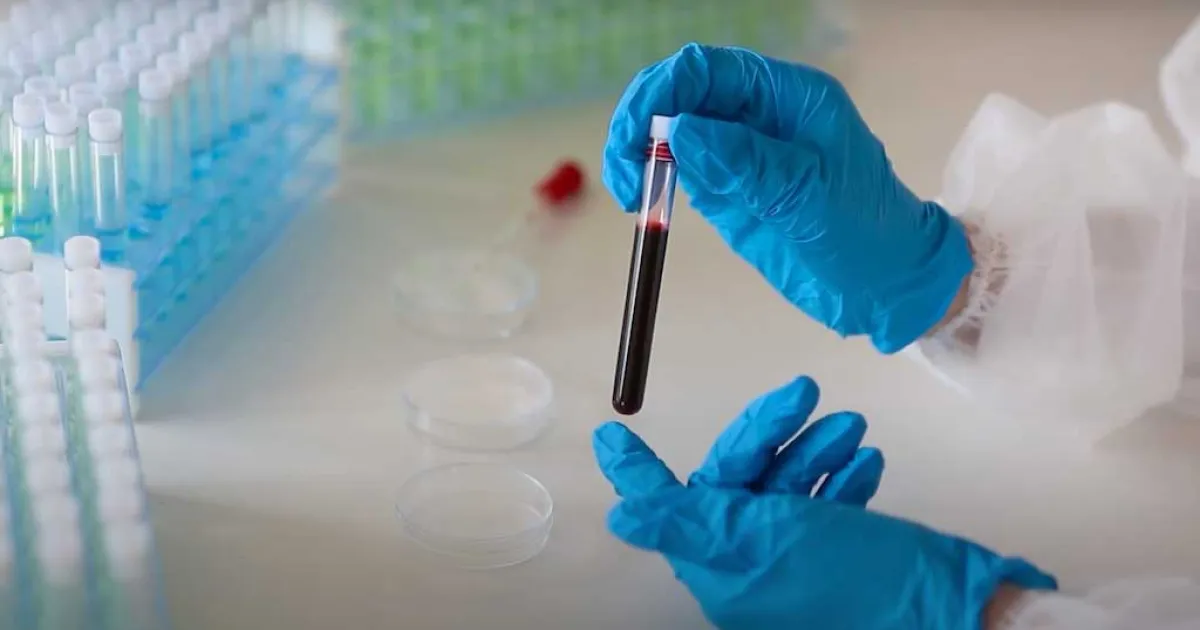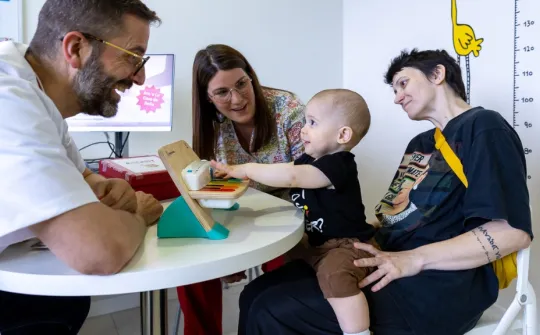Leukaemia is a type of blood cancer that develops in the bone marrow. It is the most common type of cancer in children.
What is leukaemia?
White blood cells, or leukocytes, are cells produced in the bone marrow. Their primary function is to protect the body from infection. There are different kinds of leukocytes. Neutrophils and monocytes are the first line of defense (non-specific immunity), and lymphocytes, after initial contact (through infection or a vaccine), learn to recognise the virus or bacteria and memorise it (specific immunity).
When—for a yet unknown reason—bone marrow produces abnormal white blood cells, they do not function properly and multiply in a fast, uncontrolled manner. This results in leukaemia, a type of blood cancer. These white blood cells cannot help fight off infection and they impair the production of healthy cells in the bone marrow.
In the vast majority of pediatric leukaemia cases, there is no clear cause or family history of the disease. It can arise from a genetic mutation, or a chance chromosomal abnormality in the leukaemic cells.
At the SJD Pediatric Cancer Center Barcelona (PCCB) in the SJD Barcelona Children's Hospital, we treat various types of pediatric leukaemia:
- Acute lymphoblastic leukaemia (ALL): Affects lymphocytes, most frequently in children aged one to five, although it can appear at any age. It is called acute because its symptoms develop quickly, in a matter of days or weeks. It is also known as lymphocytic leukaemia or acute lymphoid leukaemia.
- Acute myeloid leukemia (AML): Affects precursor neutrophil and monocyte cells and it is the second most common type of leukaemia. Clinical symptoms can also develop in a matter of days or weeks. It is also known as acute myelocytic or myeloblastic leukaemia.
- Other uncommon leukaemias in the pediatric age group include chronic myeloid leukaemia (CML) and juvenile myelomonocytic leukaemia (JMML).
The type of pediatric leukaemia is determined by which bone marrow stem cell the cancer develops from. It is extremely important to identify which type of leukaemia a child has in order to decide the best treatment option. Each type of leukaemia has its own clinical course and may require a specific approach to treatment.
Symptoms of leukaemia in children
Symptoms of leukaemia can vary greatly and are often confused for other common illnesses, making early diagnosis more difficult. The most common symptoms include:
- Weakness and fatigue.
- Fever.
- Bone and joint pain.
- Easy bleeding or bruising.
- Frequent or severe infections.
- Weight loss.
- Swollen lymph nodes.
It is important to be aware of the most common symptoms of other diseases that are not necessarily a sign of leukaemia. However, if a child has one or more of these symptoms for a prolonged period of time, leukaemia could be a possibility and medical attention should be sought as soon as possible.
A leukaemia diagnosis can also become a possibility after a routine blood test or medical visit, as the disease may not have any symptoms during early stages.
Diagnosing pediatric leukaemia
Leukaemia is diagnosed through a series of tests that detect the presence of abnormal blood cells, as well as assessing the bone marrow. These tests may differ from case to case, and for each type of leukaemia. However, the most common tests are blood tests and bone marrow aspirations.
Treating pediatric leukaemia
Treatment for paediatric leukaemia depends on the type and stage of the disease. Generally, it involves chemotherapy, and in some cases, immunotherapy. In few cases, a bone marrow transplant may also be required.
The SJD Barcelona Children's Hospital is part of the Innovative Therapies for Children with Cancer (ITCC) initiative, which gives us access to cutting-edge treatments and our patients the chance to be involved in pioneering clinical trials. In addition, we have the SJD Pediatric Cancer Center Barcelona, a monographic healthcare facility aimed at children and adolescents with cancer and their families.
A clear example of new treatments in action is the use of CAR-T 19 immunotherapy, which is offered to patients who have not responded to conventional treatment for acute lymphoblastic leukaemia, generally facing one or more relapses.
Acute lymphoblastic leukaemia patients, survival rate at five years
Acute myeloid leukaemia patients, survival rate at five years
2025 Figures
Progress of leukaemia in children
Leukaemia is a very serious disease, but thanks to advances in treatment and better knowledge of the disease, its prognosis in paediatric patients has improved significantly in the last few decades. This has allowed us to adapt treatment intensity for each patient on an individual basis.
Survival rates after five years are high for paediatric leukaemia, especially acute lymphoblastic leukaemia (ALL), which is the most common type of childhood leukaemia. ALL is completely cured in around 90% of cases.
With acute myeloid leukaemia (AML), which also affects children, despite being more common in adult patients, survival rates after five years are around 70% of cases.
The disease's progression in each case depends on several factors, such as the type and subtype of leukaemia, the child's response to treatment, and their general health. Furthermore, there is a possibility of relapse after the initial treatment. If the disease reappears, this can impact prognosis.
Some aspects that the patient and their family should pay close attention to include:
- Attending all treatments and check-ups indicated by their medical team.
- Having a healthy diet.
- Partaking in regular physical exercise and sport, as much as the child is able.
- Getting enough quality sleep.
- Ensuring the wellbeing of the entire family and offering emotional support.
At the SJD Pediatric Cancer Center Barcelona, we research the main types of childhood leukaemia affecting our patients. The aim of our paediatric leukaemia research groups is to deepen knowledge of the origins and molecular baseline of this type of cancer, in order to find new tools for diagnosis, prognosis and treatment.
The Pediatric Cancer Research Lab, an integral part of the PCCB facilities, was opened in 2003, and boasts around 20 years of experience in translational investigation – seeking ways to best answer to the needs of our patients. Our aim is for advances in research and investigation to translate into new treatments that can be applied to patient healthcare.
Moreover, in 2025, a paediatric leukaemia research program was launched in collaboration with the Josep Carreras Foundation and their research institute. This partnership promotes collaborative research between medical professionals, as well as encouraging continuing professional development. It also facilitates the research teams’ access to scientific platforms and the joint development of new platforms.
Finally, the SJD Barcelona Children's Hospital has an Advanced Therapies Platform, in which one of the key projects involves the development and production of CAR-T cells, which are a beneficial option for patients with acute lymphoblastic leukaemia that has not responded to conventional treatment.
CAR-T ARI 0001 research

